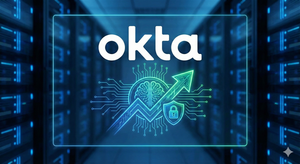- Strategic focusing on second-generation mRNA program jointly developed with GSK after withdrawal of first-generation COVID-19 vaccine candidate, CVnCoV, from regulatory review
- Nature publication of promising pre-clinical results for second-generation COVID-19 vaccine candidate, CV2CoV, in study with Harvard Medical School, showing comparable immune response to a licensed mRNA vaccine
- Positive developments across rest of the pipeline, including pre-clinical results in molecular therapies and progress of Phase 1 study with lead candidate in oncology
- Re-allocation of existing manufacturing lines and capacities to support second-generation program and streamlining of external manufacturing network
- Cash position of €1.06 billion as of September 30, 2021. CureVac continues to assess supplier commitments related to the withdrawal of first-generation COVID-19 vaccine candidate
- CureVac will host a webcast and conference call on Friday, November 19, 2021, at 8 a.m. EST/ 2 p.m. CET. Webcast and conference call information are provided in the press release
TÜBINGEN, GERMANY and BOSTON, MA / ACCESSWIRE / November 19, 2021 - CureVac N.V. (NASDAQ: CVAC), a global biopharmaceutical company developing a new class of transformative medicines based on messenger ribonucleic acid ("mRNA"), today announced financial results for the third quarter and first nine months of 2021 and provided a business update.
"As the global fight against SARS-CoV-2 continues, we are focused on creating a new generation of vaccines while building CureVac's position as a leading player in the mRNA space," said Franz-Werner Haas, Chief Executive Officer of CureVac. "The strategic decision to withdraw our first-generation COVID-19 candidate, CVnCoV, enables us to accelerate our second-generation program in partnership with GSK. Together, we are advancing our technology platform to deliver a suite of innovative mRNA vaccines in infectious diseases, including an endemic COVID-19 vaccine with the goal to address evolving market demands as the world transitions from the current pandemic to an endemic COVID-19 environment. Learnings from the first-generation program are not only expected to support the second-generation program but will also be leveraged for our programs in oncology and protein therapies."
"Following the withdrawal of CVnCoV, we now aim to refocus our existing contractual commitments on our second-generation vaccine program," said Pierre Kemula, Chief Financial Officer of CureVac. "Over the last 18 months, we aimed to balance our significant COVID-19 financial exposure with upfront payments such as in the European APA as well as revenues from collaborations and grants. Looking forward, we will continue to run our operations with financial discipline."
Selected Business Updates
Prophylactic Vaccines
Shifting COVID-19 Focus to Second-Generation mRNA Program, Jointly Developed with GSK
On October 12, 2021, CureVac announced the strategic decision to focus its COVID-19 vaccine program on the development of second-generation mRNA vaccine candidates in collaboration with GSK and to withdraw its first-generation COVID-19 vaccine candidate, CVnCoV, from the approval process with the European Medicines Agency (EMA).
Based on communication from the EMA in October 2021, CureVac estimated that the earliest possible approval of CVnCoV would come in the second quarter of 2022. By this time, CureVac and GSK expect candidates from the second-generation vaccine program to be progressing through clinical development. The decision is aligned with the evolving dynamics of the pandemic response toward greater need for differentiated vaccines with the gradual transition from an acute pandemic to an endemic SARS-CoV2 environment.
Current clinical studies with CVnCoV, including a Phase 1 study in Germany, a Phase 2a study in Peru and Panama, a Phase 2b/3 (HERALD) study in Europe and Latin America, and a Phase 3 study in participants with comorbidities in Belgium, continue with the scheduled safety follow-up times for all trial participants as per the respective trial protocols.
As a direct consequence of the withdrawal of CVnCoV, the existing Advanced Purchase Agreement with the European Commission, which was predicated on employing CVnCoV to address the acute pandemic need, will cease. CureVac remains in contact with the European Commission and is supportive of its public health efforts.
CureVac remains committed to the long-term fight against COVID-19 and aims to leverage CVnCoV learnings and infrastructure to be at the forefront of delivering advanced second-generation vaccines together with GSK. These are expected to provide more flexible protection against emerging COVID-19 variants and to offer new mRNA approaches to other infectious disease vaccines such as flu, as well as potential combination vaccines against different viruses. Second-generation clinical development is expected to start within the next few months.
CV2CoV - First Representative of Second-Generation COVID-19 Vaccine Program
CV2CoV is the first representative of the second-generation COVID-19 vaccine program, featuring a new mRNA backbone, jointly developed with GSK. The optimized mRNA backbone targets improved intracellular mRNA translation for increased and extended protein expression, resulting in earlier and stronger immune responses compared to the first-generation candidate, CVnCoV.
Nature Publication of Extended Data from Preclinical Study of CV2CoV in Non-Human Primates
On November 18, 2021, CureVac published data in the journal Nature of a preclinical study conducted in collaboration with Dan Barouch, MD, PhD, of Beth Israel Deaconess Medical Center, investigating immune responses as well as the protective efficacy of CV2CoV and the first-generation candidate, CVnCoV, against SARS-CoV-2 challenge in cynomolgus macaques. The study was made available via the bioRxiv preprint server in August 2021 .
The newly published data features a direct comparison of CV2CoV with the licensed mRNA vaccine, Comirnaty(R) (Pfizer/BioNTech). Neutralizing antibody levels measured following full vaccination of animals with either 12µg of CV2CoV or a 30µg standard dose of Comirnaty(R) were shown to be highly comparable.
The data confirm how targeted optimizations of a non-chemically modified mRNA can significantly improve immune responses in a preclinical model, providing substantiated support for the unmodified mRNA technology approach. This applies not only to the development of advanced COVID-19 vaccines but to the mRNA technology field as a whole.
Oncology
CV8102 - Cancer Immuno-Modulator in Solid Tumors
CureVac's lead oncology candidate, CV8102, is being assessed in a fully recruited Phase 1 dose-escalation study evaluating its tolerability and activity as a single agent and in combination with systemic anti-PD-1 antibodies. An expansion part of the Phase 1 study, announced in February 2021, aims to confirm the safety, tolerability and efficacy of CV8102 at a preferred 600μg dose in patients with advanced melanoma. In October 2021, the expansion part of the study was fully recruited with 10 patients in the single-agent cohort and 30 patients in the combination cohort.
On September 16, 2021, at the European Society for Medical Oncology (ESMO) conference, CureVac presented preliminary results from the completed dose escalation part of the study in 33 patients in the single-agent cohort and 25 in the combination cohort. As of June 21, 2021, in the single-agent dose-escalation cohort, one patient with a complete response and two patients with a partial response were observed. In addition, 12 patients experienced stabilization of disease. In the PD-1 combination dose-escalation cohort, one PD-1 refractory melanoma patient experienced a partial response while three patients experienced stabilization of disease.
On November 10, 2021, at the Society for Immunotherapy of Cancer (SITC) conference, CureVac further extended the ESMO update with an extensive analysis of immune cell activation to better understand the mobilization of the immune system against CV8102-injected as well as non-injected tumors. The data showed efficient stimulation of the immune system characterized by the induction of interferon alpha and interferon gamma signaling pathways. Serial tumor biopsies from individual patients demonstrated increased infiltration of tumor-fighting T cells in the microenvironment of injected as well as non-injected tumors. Both observations support the hypothesis that local injection of the RNA immuno-modulator into a single tumor lesion is able to induce a systemic response leading to immune attack against both injected and non-injected tumors. A data update for the expansion part of the study is expected in the second half of 2022.
Molecular Therapies
mRNA Therapeutic in Liver Fibrosis and Cirrhosis
A publication in the peer-reviewed Journal of Hepatology announced by CureVac on August 30, 2021, provides the first preclinical data demonstrating the therapeutic applicability of mRNA-encoded HNF4A (hepatocyte nuclear factor 4 alpha) transcription factor in the treatment of liver fibrosis and cirrhosis. The study was conducted in collaboration with experts of the renowned REBIRTH-Research Center for Translational Regenerative Medicine and Department of Gastroenterology, Hepatology and Endocrinology at the Hannover Medical School, Hannover (Germany) and applied well-established preclinical liver disease models.
HNF4A is an important regulator and key factor in liver metabolism, which has been shown to gradually decrease with disease progression. In this study, mouse models of the disease were treated with mRNA encoding HNF4A. The treatment was able to restore HNF4A levels and thereby significantly reduce liver injury in treated animals.
Liver fibrosis and cirrhosis contribute to millions of deaths annually and represent a major health care burden worldwide. However, there are currently no approved drugs that robustly inhibit liver fibrosis. The results of the study provide the first direct preclinical evidence that mRNA therapeutics have the potential to serve as treatment options for fibrosis.
Manufacturing
In the context of a reduced short-term peak demand for vaccines following the first wave of pandemic vaccination efforts, CureVac announced on September 14, 2021 its strategic decision to streamline the footprint of the European manufacturing network for its mRNA product pipeline, first announced in November 2020. As a result, contracts with two manufacturing partners were terminated.
To prepare for the more differentiated demand of second-generation vaccines in line with the gradual transition from an acute pandemic to an endemic COVID-19 environment going into 2022, CureVac has initiated the switch of manufacturing processes from its discontinued first-generation vaccine candidate, CVnCoV, to manufacturing processes for clinical material of second-generation constructs at the European network facilities as well as its in-house manufacturing plant GMPIII.
This includes the implementation of processes for flexible adaption to new variant-specific constructs as well as processes for the production of modified mRNA constructs, which will be explored as part of the second-generation development program conducted in collaboration with GSK. Clinical trial material for CV2CoV, the first representative of the broad second-generation program, has already been produced in CureVac's small-scale in-house plants, GMP I and II.
Financial Update for the Third Quarter and First Nine Months of 2021
Financial Impact of the EU APA Termination
Last year, on November 30, 2020, CureVac entered into an Advanced Purchase Agreement (APA) with the European Commission (EC), which was acting on behalf and in the name of all Member States of the European Union to deliver 225 million doses of CVnCoV. In order to support our accelerated efforts to develop a safe and effective vaccine, the EC structured the APA to share the financial risk with CureVac and to support the development of CureVac's operations in the form of an upfront payment of €450 million. Upon notification of the EC of the withdrawal of CureVac's regulatory approval application for CVnCoV in October 2021, the APA automatically terminated. According to the EU APA, in such case of termination, CureVac must return only the unspent amount of the prepayment. CureVac is in the process of submitting to the EC a report of qualified expenditures incurred or committed to using the upfront payment and do not expect that it will be required to return any portion of it.
The value of certain assets, semi-finished and finished goods that will have no future use will be assessed in the fourth quarter of 2021.
CureVac is currently coordinating with the EC to evaluate whether the EC will exercise its option to recover some raw materials and/or primary components paid for with the upfront as allowed for under the APA.
Cash Position
Cash and cash equivalents decreased to €1,061.0 million as of September 30, 2021, from €1,322.6 million as of December 31, 2020. In the first nine months of 2021, cash used in operations was mainly for the advancement of all R&D activities for CVnCoV, our first-generation COVID-19 vaccine candidate, which we withdrew from the regulatory approval process in October 2021.
Cash inflows were mainly provided by the raising of €404 million in net proceeds in a follow-on public offering in the first quarter of the year, an upfront payment of €75 million received in May 2021 related to our collaboration with GSK on our second-generation COVID-19 vaccine candidate, CV2CoV, and €38.3 million received from our German Federal Ministry of Education and research (BMBF) grant.
Revenues
Revenues amounted to €29.3 million and €61.8 million for the three and nine months ended September 30, 2021, respectively, representing an increase of €24.1 million and €19.0 million, or 463% and 44%, from €5.2 million and €42.8 million for the same periods in 2020.
The increases were mainly driven by revenues from our collaborations with GSK; in July 2020, GSK and CureVac signed a strategic collaboration agreement for the research, development, manufacturing and commercialization of mRNA-based vaccines and monoclonal antibodies targeting infectious disease pathogens. In April 2021, GSK and CureVac signed the COVID Collaboration and License Agreement for a second-generation COVID-19 vaccine program. In total, for both programs, revenues of €49.6 million were recognized in the first nine months of 2021. In addition, in June 2021, Boehringer Ingelheim informed CureVac of its intention to terminate the collaboration agreement for BI1361849. The termination became effective on November 17, 2021. As a result of the termination, the remaining contract liability, related to the upfront payment, is now being recognized over a shorter period through the termination date. For the first nine months of 2021, €10.0 million, compared to €1.4 million in the same period of 2020, was recognized as revenue from this BI collaboration. These increases were partly offset by a €33.1 million one-time effect in the second quarter of 2020, as a result of the termination of our collaboration with Eli Lilly.
Operating Result
Operating loss amounted to €143.1 million and €406.7 million for the three and nine months ended September 30, 2021, representing an increase of €106.4 million and €343.5 million, respectively, from €36.7 million and €63.2 million for the same periods in 2020. The main driver of the increase in operating loss was higher research and development costs for CVnCoV, our first-generation COVID-19 vaccine candidate. These R&D costs consist primarily of costs related to clinical research organizations and to personnel involved in the development of CVnCoV. We also recognized increased cost of sales mainly due to activities for production processes for CVnCoV. The increase of cost of sales was also driven by recognition of expenses related to ineffective set-up activities and settlement costs related to the termination of several CMO contracts. The increase in general and administrative expenses was mainly due to consulting services for product launch readiness and personnel-related costs from an increased headcount. This increase in expenses was partially offset by a significant increase in other operating income driven by our grant from the BMBF for the development and production of our first-generation COVID-19 vaccine candidate.
Financial Result (Finance Income and Expenses)
Financial result for the three and nine months ended September 30, 2021 were a loss, on a net basis, of €0.4 million and €1.2 million, respectively, representing a decrease of €0.4 million and an increase of €8.2 million, from €0.0 million and a loss of €9.4 million for the same periods in 2020. Financial result for the nine months ended September 30, 2021, was mainly driven by negative interest on cash, held in liquid funds to support the development and manufacturing activities of CVnCoV and CV2CoV. Negative interest on cash was almost fully offset by foreign exchange gains. The financial result for the nine months ended September 30, 2020, was mainly driven by interest recognized on convertible loans, which were fully repaid in August 2020.
Pre-Tax Loss
Pre-tax losses were €143.5 million and €407.9 million for the three and nine months ended September 30, 2021, respectively, compared to €36.7 million and €72.6 million in the same respective periods of 2020.
Conference call and webcast details
Dial-in numbers to participate in the conference call:
U.S. Toll-Free: +1-877-407-0989
International: +1-201-389-0921
Germany: 0800 182 0040
The live webcast link can be accessed via the newsroom section of the CureVac website at https://www.curevac.com/en/newsroom/events/
Corresponding presentation slides will be posted shortly before the start of the webcast.
A replay will be made available at this website after the event.
About CureVac
CureVac is a global biopharmaceutical company in the field of messenger RNA (mRNA) technology, with more than 20 years of expertise in developing and optimizing this versatile biological molecule for medical purposes. The principle of CureVac's proprietary technology is the use of optimized mRNA as a data carrier to instruct the human body to produce its own proteins capable of fighting a broad range of diseases. In July 2020, CureVac entered in a collaboration with GSK to jointly develop new products in prophylactic vaccines for infectious diseases based on CureVac's second-generation mRNA technology. This collaboration was later extended to the development of second-generation COVID-19 vaccine candidates, and modified mRNA vaccine technologies. Based on its proprietary technology, CureVac has built a deep clinical pipeline across the areas of prophylactic vaccines, cancer therapies, antibody therapies, and the treatment of rare diseases. CureVac had its initial public offering on the New York Nasdaq in August 2020. It is headquartered in Tübingen, Germany, and employs more than 700 people at its sites in Tübingen, Frankfurt, and Boston, USA. Further information can be found at www.curevac.com .
CureVac Investor Relations Contact
Dr. Sarah Fakih, Vice President Corporate Communications and Investor Relations
CureVac, Tübingen, Germany
T: +49 7071 9883-1298
M: +49 160 90 496949
sarah.fakih@curevac.com
CureVac Media Contact
Anna Kamilli, Manager Communications
CureVac, Tübingen, Germany
T: +49 7071 9883-1684
anna.kamilli@curevac.com
Bettina Jödicke-Braas, Manager Communications
CureVac, Tübingen, Germany
T: +49 7071 9883-1087
bettina.joedicke-braas@curevac.com
Forward-Looking Statements CureVac
This press release contains statements that constitute "forward-looking statements" as that term is defined in the United States Private Securities Litigation Reform Act of 1995, including statements that express the opinions, expectations, beliefs, plans, objectives, assumptions or projections of CureVac N.V. and/or its wholly owned subsidiaries CureVac AG, CureVac Real Estate GmbH, CureVac Inc., CureVac Swiss AG and CureVac Corporate Services GmbH (the "company") regarding future events or future results, in contrast with statements that reflect historical facts. Examples include discussion of the potential efficacy of the company's vaccine and treatment candidates and the company's strategies, financing plans, growth opportunities and market growth. In some cases, you can identify such forward-looking statements by terminology such as "anticipate," "intend," "believe," "estimate," "plan," "seek," "project," or "expect," "may," "will," "would," "could," "potential," "intend," or "should," the negative of these terms or similar expressions. Forward-looking statements are based on management's current beliefs and assumptions and on information currently available to the company. However, these forward-looking statements are not a guarantee of the company's performance, and you should not place undue reliance on such statements. Forward-looking statements are subject to many risks, uncertainties and other variable circumstances, including negative worldwide economic conditions and ongoing instability and volatility in the worldwide financial markets, ability to obtain funding, ability to conduct current and future preclinical studies and clinical trials, the timing, expense and uncertainty of regulatory approval, reliance on third parties and collaboration partners, ability to commercialize products, ability to manufacture any products, possible changes in current and proposed legislation, regulations and governmental policies, pressures from increasing competition and consolidation in the company's industry, the effects of the COVID-19 pandemic on the company's business and results of operations, ability to manage growth, reliance on key personnel, reliance on intellectual property protection, ability to provide for patient safety, and fluctuations of operating results due to the effect of exchange rates or other factors. Such risks and uncertainties may cause the statements to be inaccurate and readers are cautioned not to place undue reliance on such statements. Many of these risks are outside of the company's control and could cause its actual results to differ materially from those it thought would occur. The forward-looking statements included in this press release are made only as of the date hereof. The company does not undertake, and specifically declines, any obligation to update any such statements or to publicly announce the results of any revisions to any such statements to reflect future events or developments, except as required by law.
For further information, please reference the company's reports and documents filed with the U.S. Securities and Exchange Commission (SEC). You may get these documents by visiting EDGAR on the SEC website at www.sec.gov .
Cash and Condensed Consolidated Profit and Loss Data
|
|
|
| ||
| (in € millions) |
| December 31, 2020 |
| September 30, 2021 |
|
|
|
| (unaudited) |
| |
| Cash and Cash Equivalents |
| 1,322.6 |
| 1,061.0 |
|
|
|
|
|
| |
|
|
|
|
| |
Three months ended September 30, |
| ||||
| (in € millions) |
| 2020 |
| 2021 |
|
| (unaudited) |
| (unaudited) |
| |
| Revenue | 5.2 |
| 29.3 |
| |
| Cost of Sales, Operating Expenses & Other Operating Income | -41.9 |
| -172.4 |
| |
| Operating Result | -36.7 |
| -143.1 |
| |
| Financial Result | 0 |
| -0.4 |
| |
| Pre-Tax Loss | -36.7 |
| -143.5 |
| |
Nine months ended September 30, |
| ||||
| (in € millions) |
| 2020 |
| 2021 |
|
| (unaudited) |
| (unaudited) |
| |
| Revenue | 42.8 |
| 61.8 |
| |
| Cost of Sales, Operating Expenses & Other Operating Income | -106.0 |
| -468.5 |
| |
| Operating Result | -63.2 |
| -406.7 |
| |
| Financial Result | -9.4 |
| -1.2 |
| |
| Pre-Tax Loss | -72.6 |
| -407.9 | ||
SOURCE: CureVac
View source version on accesswire.com:
https://www.accesswire.com/673695/CureVac-Announces-Financial-Results-for-the-Third-Quarter-and-First-Nine-Months-of-2021-and-Provides-Business-Update





